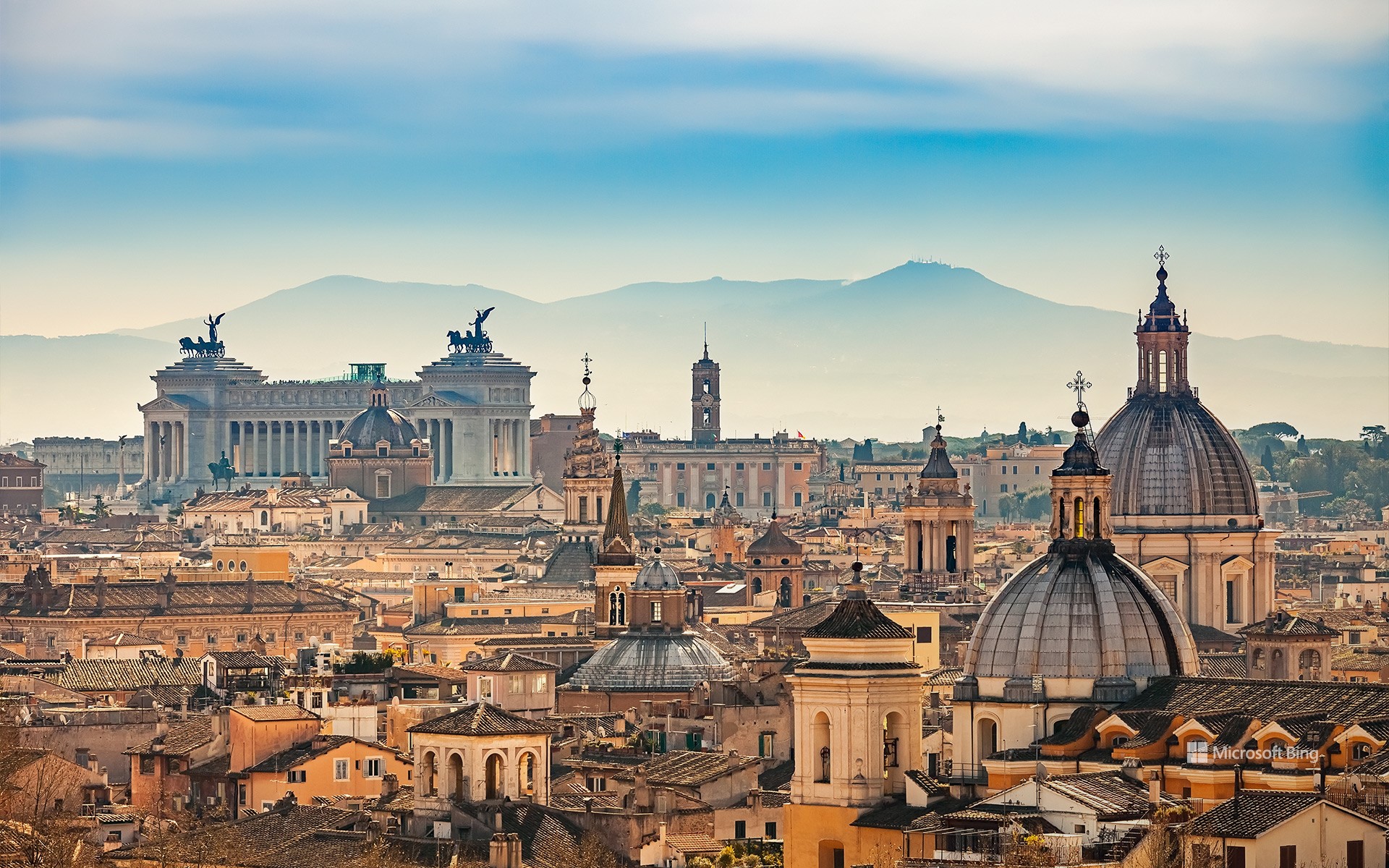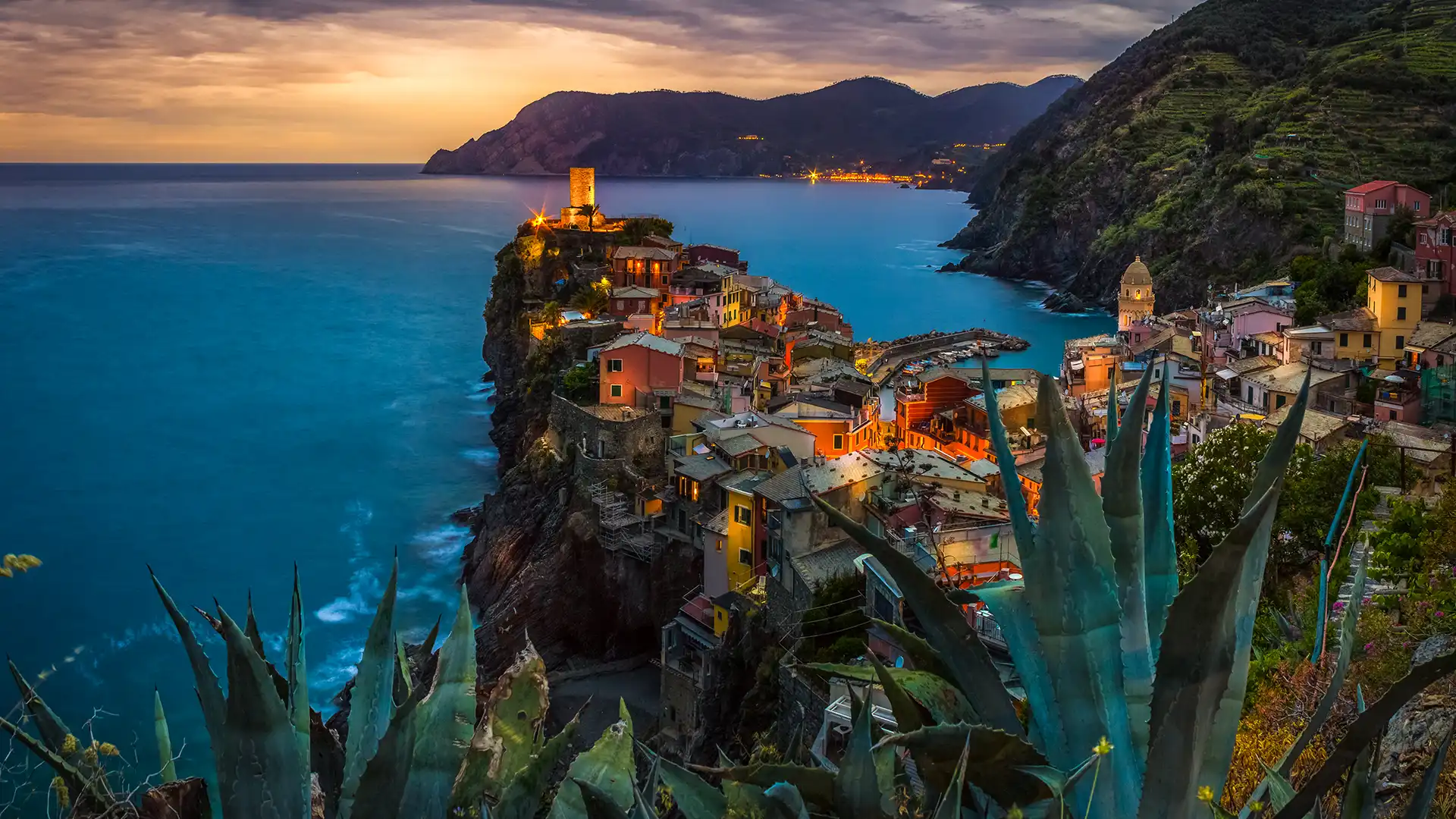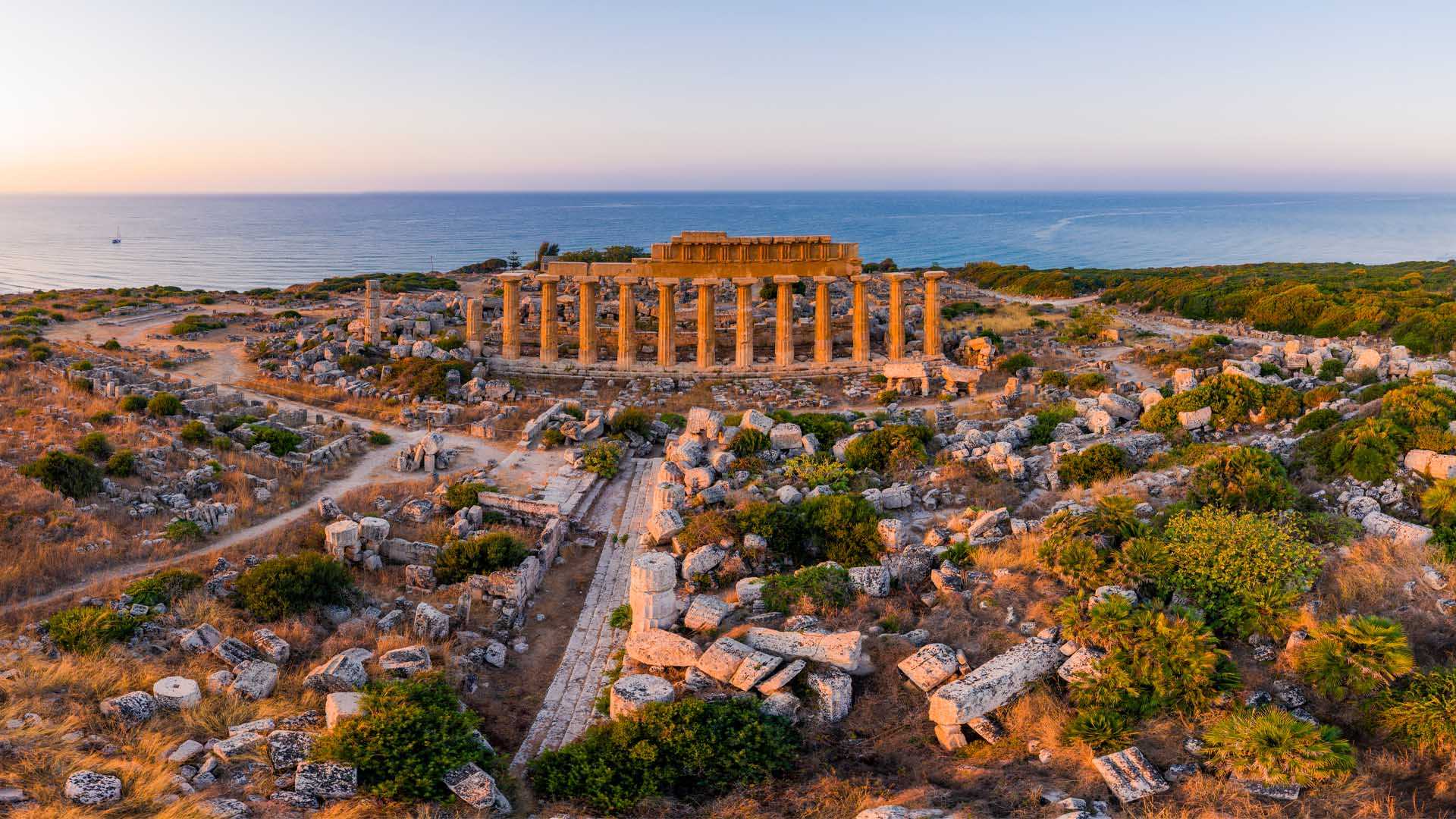马苏阿的甜面包海蚀柱,撒丁岛,意大利 (© DaLiu/Getty Images)
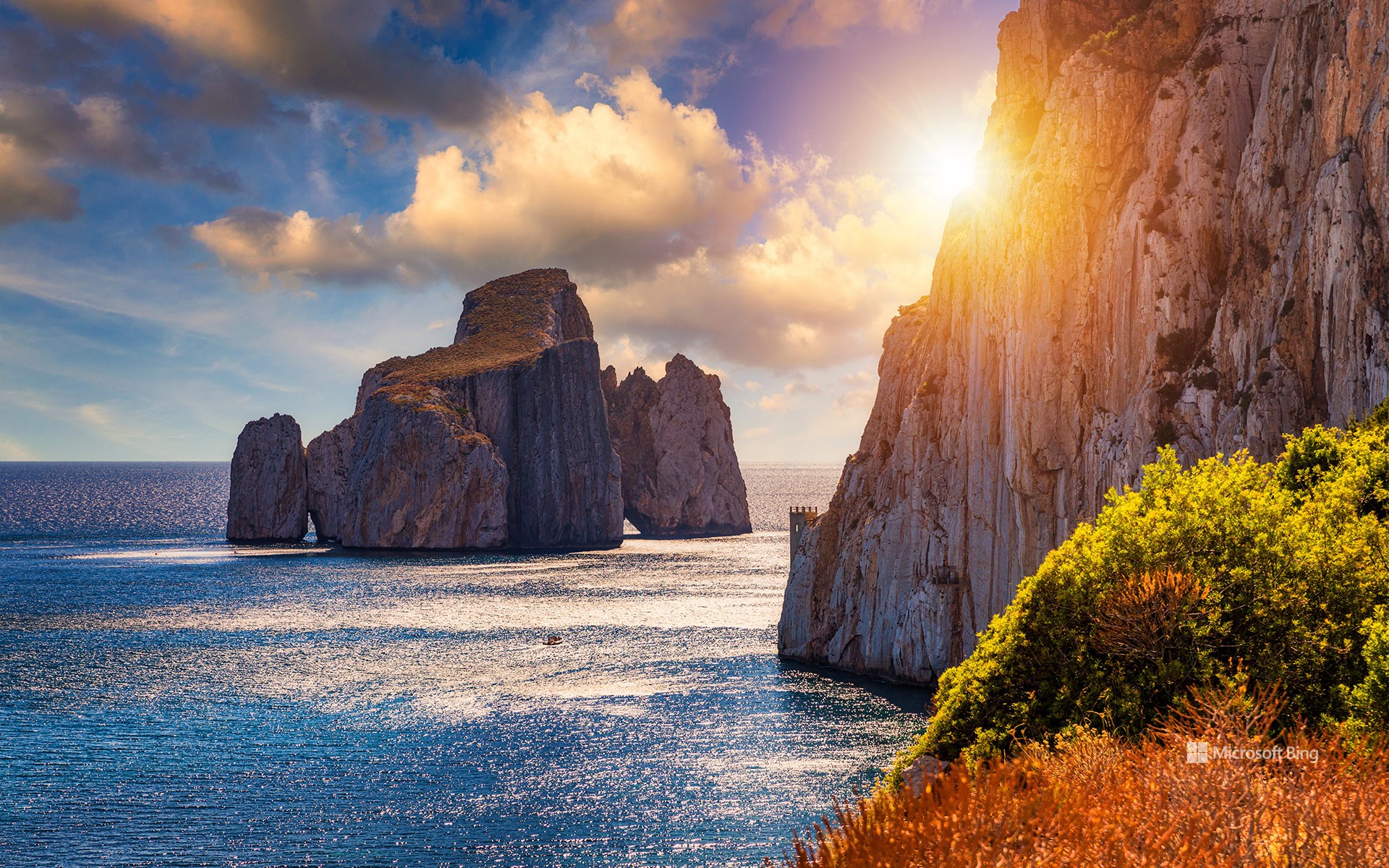
马苏阿的甜面包海蚀柱,撒丁岛,意大利 (© DaLiu/Getty Images)
壮观的自然古迹
甜面包海蚀柱,撒丁岛,意大利
马苏阿是意大利伊格莱西亚斯市的一个小镇,周围环绕着地中海植物群,两侧是高耸的石灰岩悬崖。 那些喜欢钓鱼、浮潜或水肺潜水的人会喜欢这个位置,因为这里晶莹剔透的海水和极佳的能见度。然而,壮丽的甜面包海蚀柱是一个巨大的石堆,从海滩前的水面上浮现出来——事实证明是它是该海湾的主要景点。它的名字来源于巴西里约热内卢的一个命名为甜面包的海蚀柱岩层,由于与它惊人的相似,游客们都会与它联系在一起。尽管甜面包海蚀柱的表面积只有30平方米,但它却异常高大,高出海面133米。小岛的西北和东南两侧有天然的拱门和画廊,石头是在这些地方被侵蚀而雕刻出来的。 如果有人敢的话,一艘小船可以穿过那里的一条隧道。
卡斯泰尔梅扎诺,意大利 Castelmezzano, Italy (© Rudy Balasko/Shutterstock)
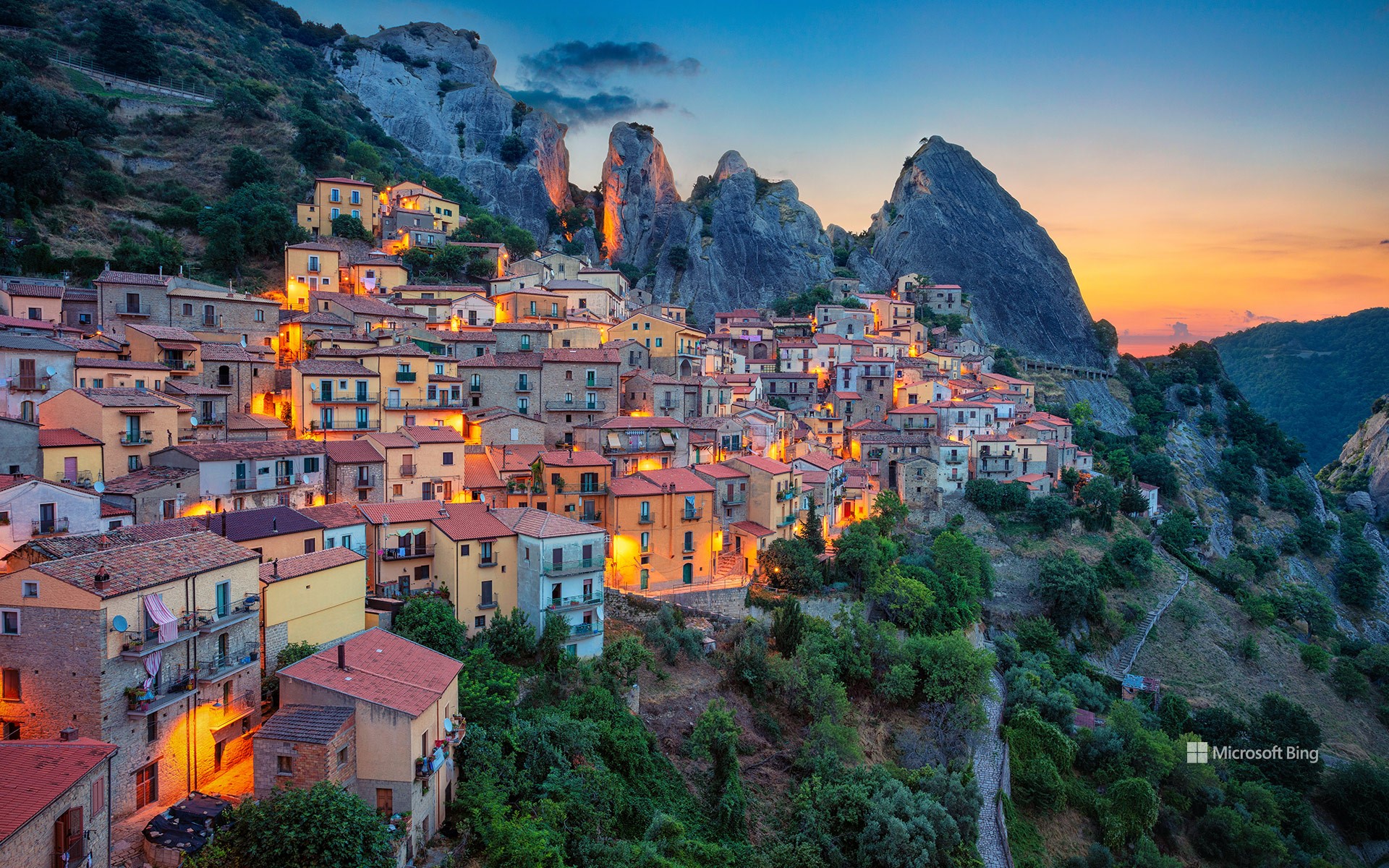
卡斯泰尔梅扎诺,意大利 Castelmezzano, Italy (© Rudy Balasko/Shutterstock)
明信片般完美的风景 A postcard-perfect landscape
卡斯泰尔梅扎诺,意大利
坐落在多洛米蒂山脉的崎岖峭壁上,意大利古老的村庄卡斯泰尔梅扎诺散发着迷人的魅力。这座村庄已被列为世界遗产,它历经过封建领主的统治和大大小小的战争,狭窄的小巷和古老的建筑里都有历史故事。据说,公元11世纪左右诺曼人定居于此,并建造了一座城堡,该村庄由此得名。此外,卡斯泰尔梅扎诺还有各种冒险活动,你可以来一次“天使飞行”,在山脉之间感受高空滑索。不过,感受这个小村庄的惬意的最佳方式,可能只需一杯咖啡:喝着咖啡看着太阳从雄伟的山峰后冉冉升起,与街灯一同照亮傍山而建的一排排房屋。
Castelmezzano, Italy
Embraced by the rugged peaks of the Lucanian Dolomites, the ancient village of Castelmezzano in southern Italy glows with charm. Its narrow alleys and cobblestone streets pass buildings that cling to the mountainside. This picturesque destination is brimming with history; from its rule by feudal lords to battles long forgotten. It's believed that the Normans settled here around the 11th century AD and constructed a castle, from which the village gets its name. Castelmezzano isn't just a sleepy portrait of the past, it also offers adventure activities for the brave, including a high-altitude zip line between mountains on the Volo dell'Angelo (Flight of the Angel). Yet the finest pleasure the small village offers might just be grabbing a cup of coffee and watching the sun rise behind the majestic mountain peaks, illuminating those huddled houses as the streetlamps go out.
从意大利圣天使城堡俯瞰罗马 (© sborisov/Getty Images)
韦尔纳扎,五渔村,意大利 Vernazza in the Cinque Terre region of Italy (© Rubin Versigny/Getty Images)
塞利努斯的神庙,西西里岛,意大利 (© Antonino Bartuccio/eStock)
普罗奇达岛,意大利 Procida, Italy (© Sean Pavone/Shutterstock)
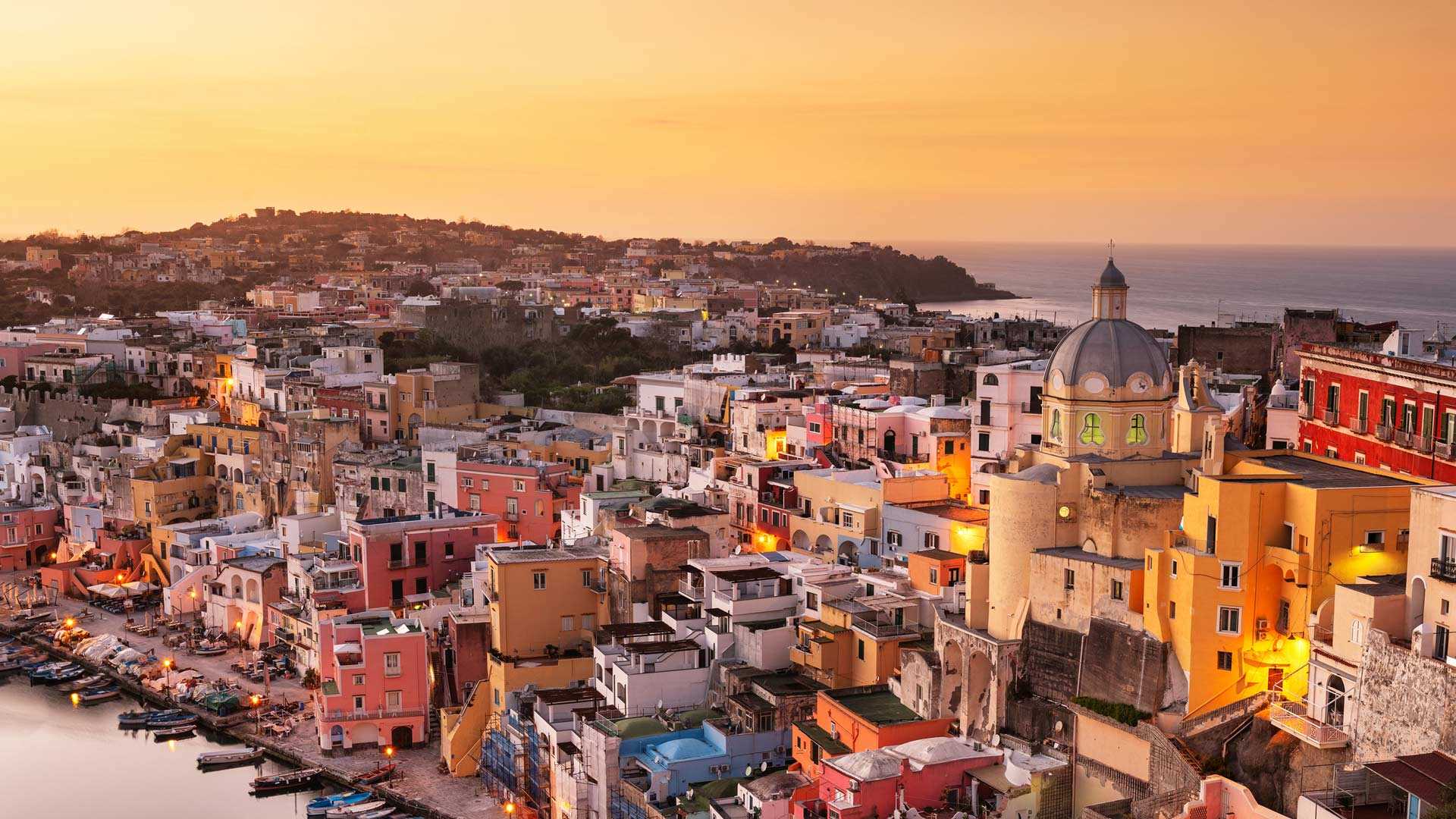
普罗奇达岛,意大利 Procida, Italy (© Sean Pavone/Shutterstock)
充满活力、阳光普照的岛屿 A vibrant, sun-drenched island
意大利普罗奇达岛
普罗奇达岛是意大利一个迷人的岛屿,位于那不勒斯湾,以其色彩缤纷的建筑、风景如画的街道和令人惊叹的海景而闻名。这座岛历史悠久,几个世纪以来,希腊人、罗马人等社会文明都曾在此定居。历史中心是该岛的主要景点之一,以蜿蜒穿过山丘的狭窄街道小巷为特色。
普罗奇达岛拥有好几个美丽的海滩和海湾,为游客提供了放松和沐浴地中海阳光的机会。岛上最受欢迎的几个海滩包括焦埃拉海滩、德尔波斯蒂诺海滩和奇拉乔海滩。普罗奇达岛的视觉效果令人惊叹,已成为了30多部电影的拍摄地,包括《秘密特工》《天才瑞普利》和《邮差》。
Procida, Italy
Procida is a charming Italian island in the Gulf of Naples, boasting colorful buildings, picturesque streets, and stunning sea views. The island has a rich history, having been settled by the Greeks, Romans, and other civilizations over the centuries, but is less well-known than its larger neighbours, Capri and Ischia. Its oldest fishing village, Marina Corricella, features pastel-colored buildings and narrow streets and is a great place to enjoy fresh seafood and soak up the atmosphere. From there, you can climb up to the fortified medieval village of Terra Murata, built on the island's highest point, which offers panoramic views over the entire Gulf of Naples.
Procida is home to several beautiful beaches and coves, including Chiaiolella, Spiaggia del Postino, and Ciraccio. And it's popular with film makers too, starring in more than 30 movies including 'The Man From U.N.C.L.E.,' 'The Talented Mr. Ripley,' and 'Il Postino.' In 2022, it was named Italy's Capital of Culture, the first island to be awarded the honor.
意大利三峰山上空的银河 Milky Way above Tre Cime di Lavaredo, South Tyrol, Italy (© Juan Romero/Cavan Images)
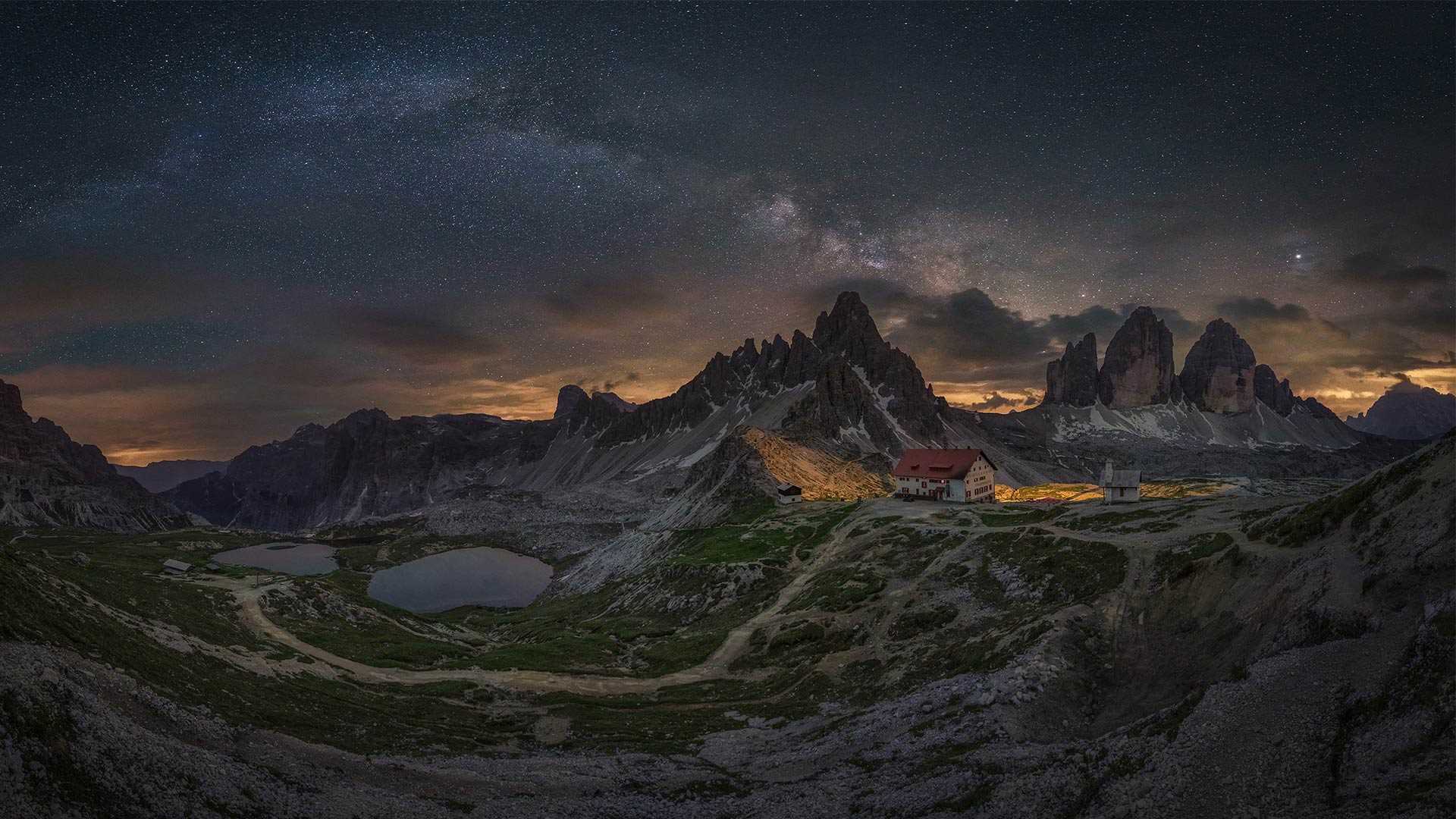
意大利三峰山上空的银河 Milky Way above Tre Cime di Lavaredo, South Tyrol, Italy (© Juan Romero/Cavan Images)
这些蔚为壮观的山峰在何处? Where are these spectacular peaks?
三峰山,意大利
这三座位于意大利多洛米蒂山脉的山峰被称为三峰山。这片群山是阿尔卑斯山最著名的景点之一,世界各地的游客都来这里徒步旅行。你可以从各个角度欣赏壮丽的山峰,到了夏天,你还能看到漫山的野花。如果你想在月光下徒步或露营,一定要提前计划,为5小时的行程准备充足的水和零食。2009年,三峰山和整个多洛米蒂山脉一起被联合国教科文组织列为世界遗产。
The Tre Cime di Lavaredo, Italy
This trio of peaks, known as the Tre Cime di Lavaredo, is located in the Sexten Dolomites of South Tyrol, Italy. The mountain group is one of the best-known in the Dolomites and tourists visit from all over the world to hike its trails. You'll enjoy a breathtaking view of the peaks from all angles and in the summer, you'll see a beautiful array of wildflowers. Make sure to plan ahead if you want to hike or camp under the moonlit sky and bring plenty of water and snacks. These peaks are part of the Dolomites World Heritage Site, which was designated in 2009.
阿特拉尼,阿马尔菲海岸,意大利 Atrani, Amalfi Coast, Italy (© Amazing Aerial/Shutterstock)
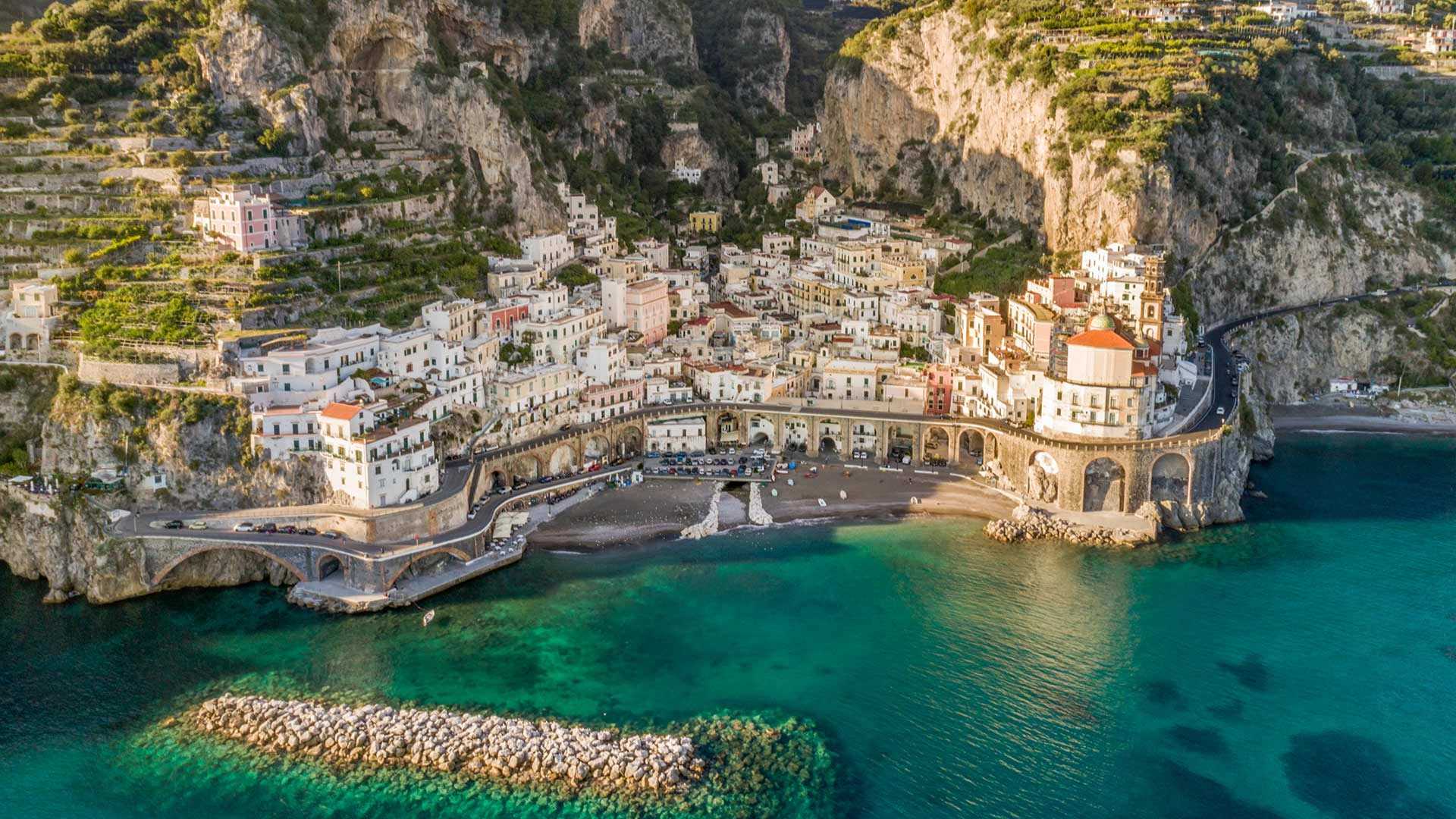
阿特拉尼,阿马尔菲海岸,意大利 Atrani, Amalfi Coast, Italy (© Amazing Aerial/Shutterstock)
一张来自意大利的明信片 Postcard from Italy
阿特拉尼,阿马尔菲海岸,意大利
阿特拉尼位于意大利西南部的阿马尔菲海岸,房屋的红色粘土屋顶在阳光下非常引人注目。阿特拉尼是意大利最小的城镇之一,镇上只有800居民。这个传统渔村也是阿马尔菲海岸世界文化遗产的一部分。这里保留了原有的建筑特色,是一个完美的地中海度假胜地。游客可以在这里沐浴阳光,在海滨咖啡馆里品尝当地海鲜。
Atrani, Amalfi Coast, Italy
With its red clay roofs above the spangled sea, Atrani shines in the sun on the Amalfi Coast in southwest Italy. Just 800 people get to call Atrani home, while the rest of us can just hope to visit one of the smallest towns in Italy and walk its intricately built roads and admire the small houses perched above the waiting beach. The traditional fishing village is part of the Costiera Amalfitana UNESCO World Heritage Site, and it has kept its traditional characteristics alive. It is a perfect Mediterranean getaway to soak up the sun and enjoy local seafood at a waterfront cafe.
拉布罗小镇,列蒂省,意大利 Village of Labro, Rieti Province, Italy (© Marco Ilari/Shutterstock)
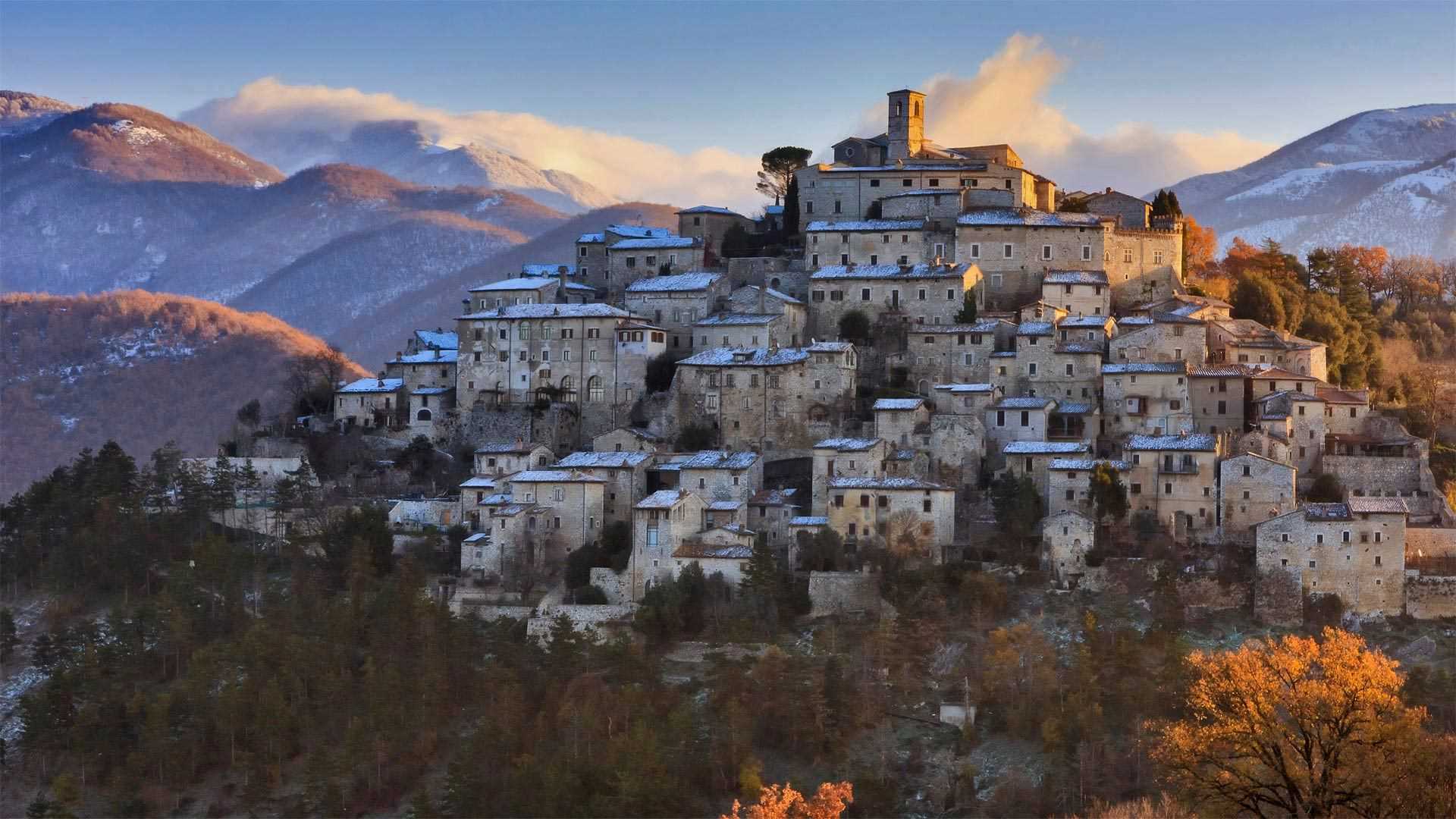
拉布罗小镇,列蒂省,意大利 Village of Labro, Rieti Province, Italy (© Marco Ilari/Shutterstock)
历史悠久的山顶村庄 History awaits atop the hill
拉布罗,意大利
今天的照片展示的是罗马东北方向约43英里的意大利小村庄拉布罗。拉布罗始建于公元9世纪至10世纪,罗马帝国奥托大帝将其封给了一个王室贵族,村庄面积只有约4.4平方英里。诺比利-维泰莱斯基城堡坐落在树木繁茂的山坡上,修建初衷是为了保卫周边和控制山谷的通信路线。二战期间,拉布罗的人口急剧减少,整个村庄几近消失。二战后,拉布罗以旅游业为目标进行了重建,现在这里是个热门的旅游目的地。
Village of Labro, Italy
Join us for a journey to a tiny Italian village about 43 miles northeast of Rome. Founded sometime between the 9th and 10th centuries, the village of Labro, having been assigned to a powerful aristocratic family by Emperor Otto the Great, only covers a little over 4.4 square miles. Perched atop a wooded hill, the Nobili-Vitelleschi castle originally served to secure the border and control communication routes in the valley below. Labro is now almost purely a tourist destination, having been restored for the purpose shortly after WWII when the village almost evaporated due to mass depopulation.
多洛米蒂山谷中的科莱圣卢恰小镇,意大利 Colle Santa Lucia in the Dolomites, Italy (© mauritius images GmbH/Alamy)
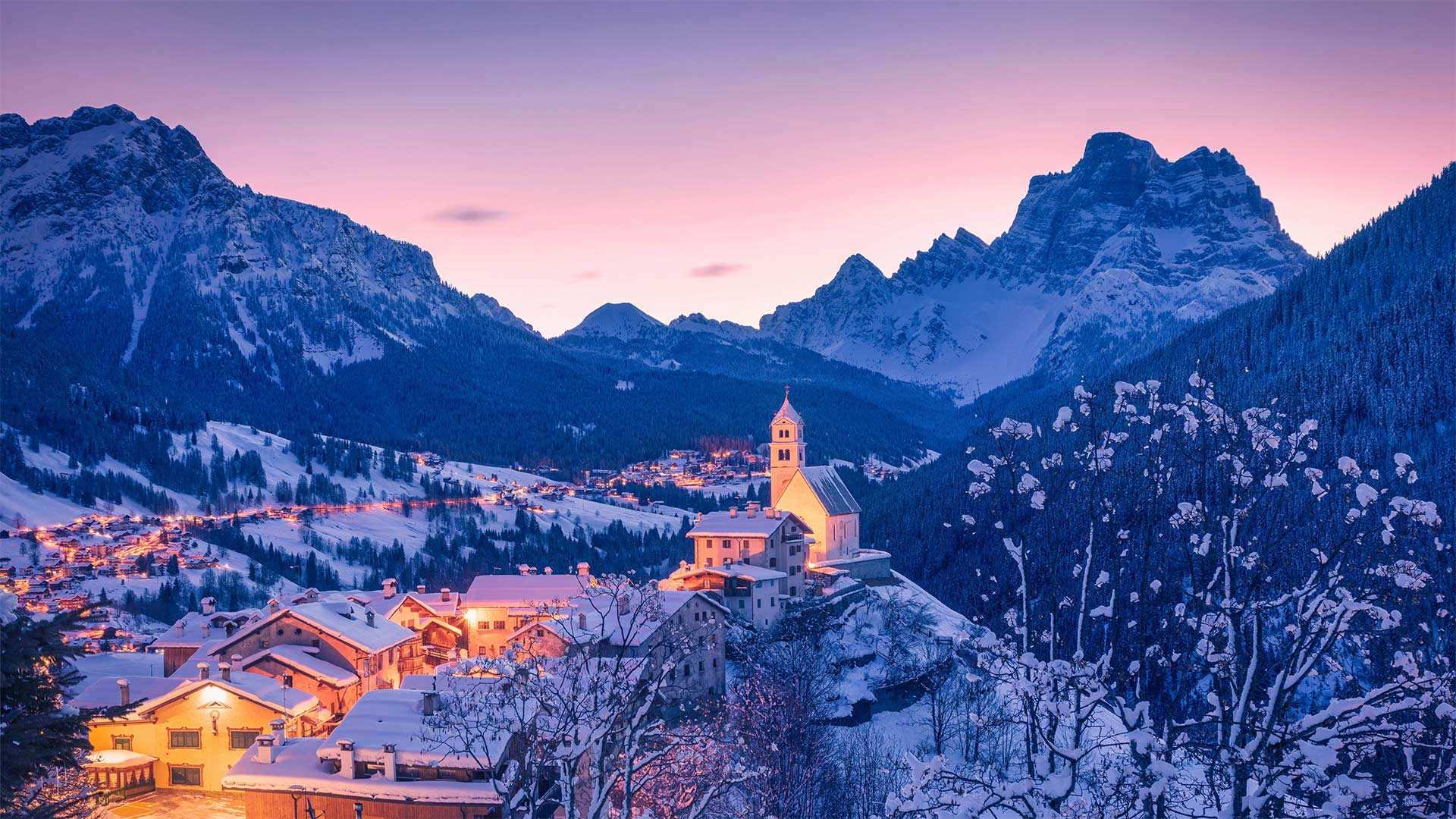
多洛米蒂山谷中的科莱圣卢恰小镇,意大利 Colle Santa Lucia in the Dolomites, Italy (© mauritius images GmbH/Alamy)
明信片和雪花球的取景地 The envy of postcards and snow globes
科莱圣卢恰小镇,多洛米蒂山,意大利
这个位于多洛米蒂山山坡上的小村庄风景如画,如果你把它误认为电影中的场景也不足为怪。科莱圣卢恰是一个意大利小镇,有着约400名居民。尽管科莱圣卢恰位于意大利北部,但这个小镇的风格更偏向奥地利。小镇距离奥地利边境的蒂罗尔州只有几步之遥。和它的奥地利邻居一样,科莱圣卢恰以壮美的山峰和滑雪场而闻名。相较于晴朗的威尼斯,科莱圣卢恰的气候更接近寒冷的因斯布鲁克,尽管威尼斯距离小镇南边仅60英里。
Colle Santa Lucia, Dolomites, Italy
This tiny hamlet on the slopes of the Dolomite Mountains is so picturesque, we'd understand if you mistook it for a movie set. But Colle Santa Lucia is a real village in Italy with about 400 residents. Despite its location in Italy's northern reaches, the village is more culturally Austrian than Italian, and is only a stone's throw from the Austrian border state of Tyrol. And like its Austrian neighbors, Colle Santa Lucia is known for its peaks and ski resorts. It has more in common with wintry Innsbruck than sunny Venice, which is less than 100 miles away to the south.
